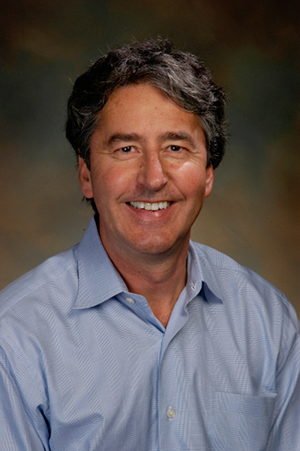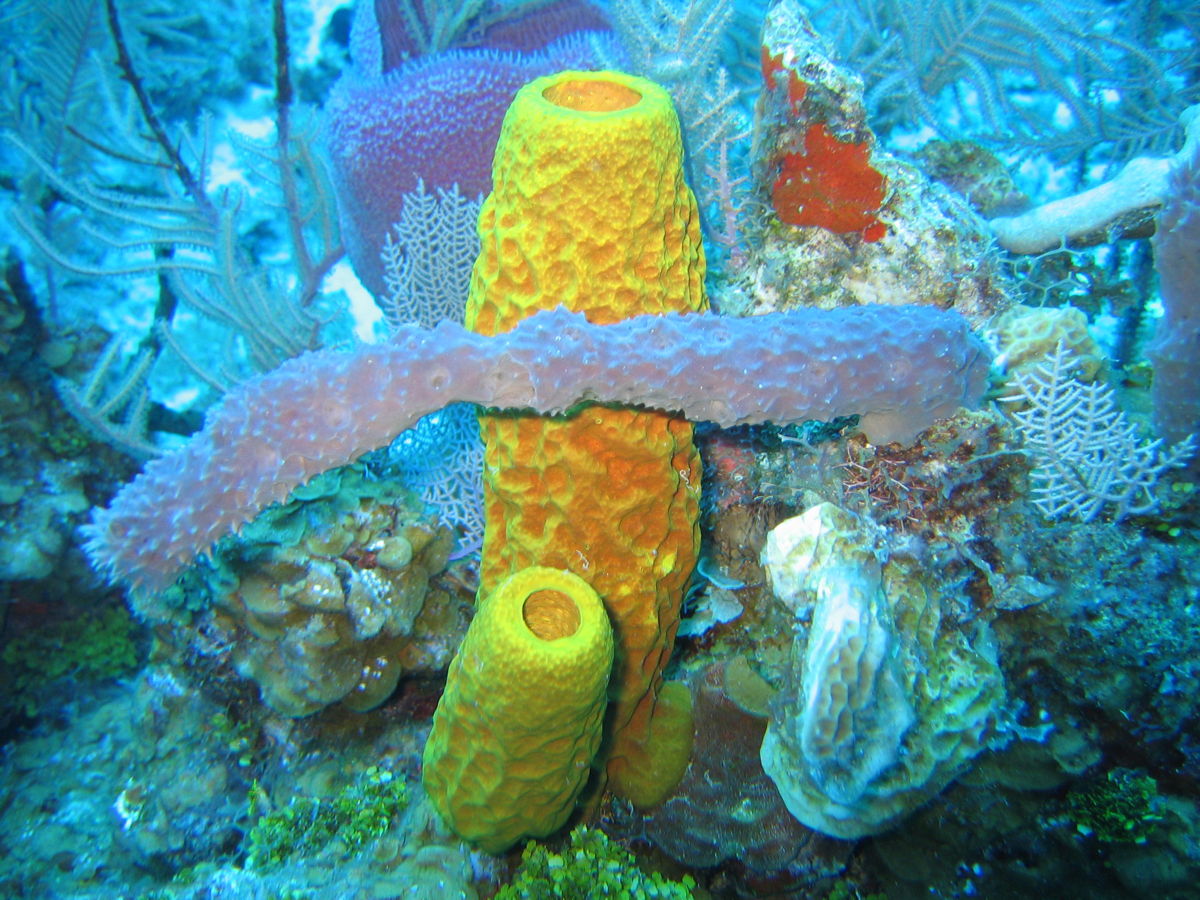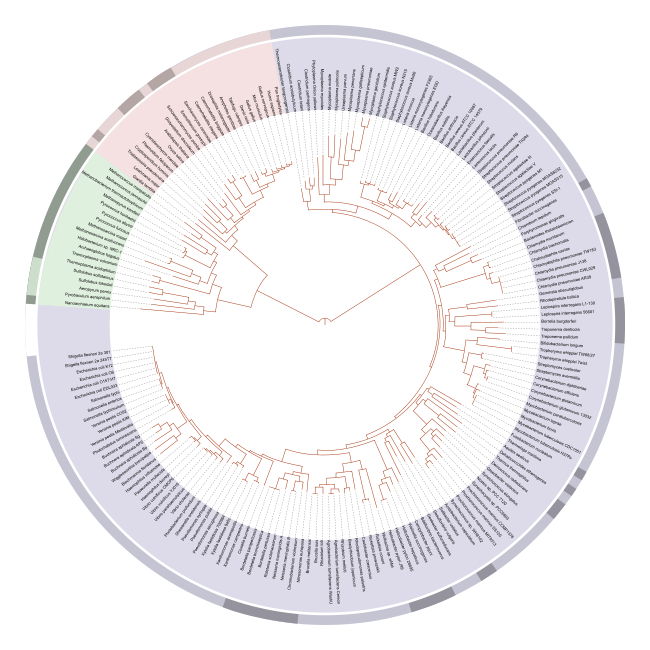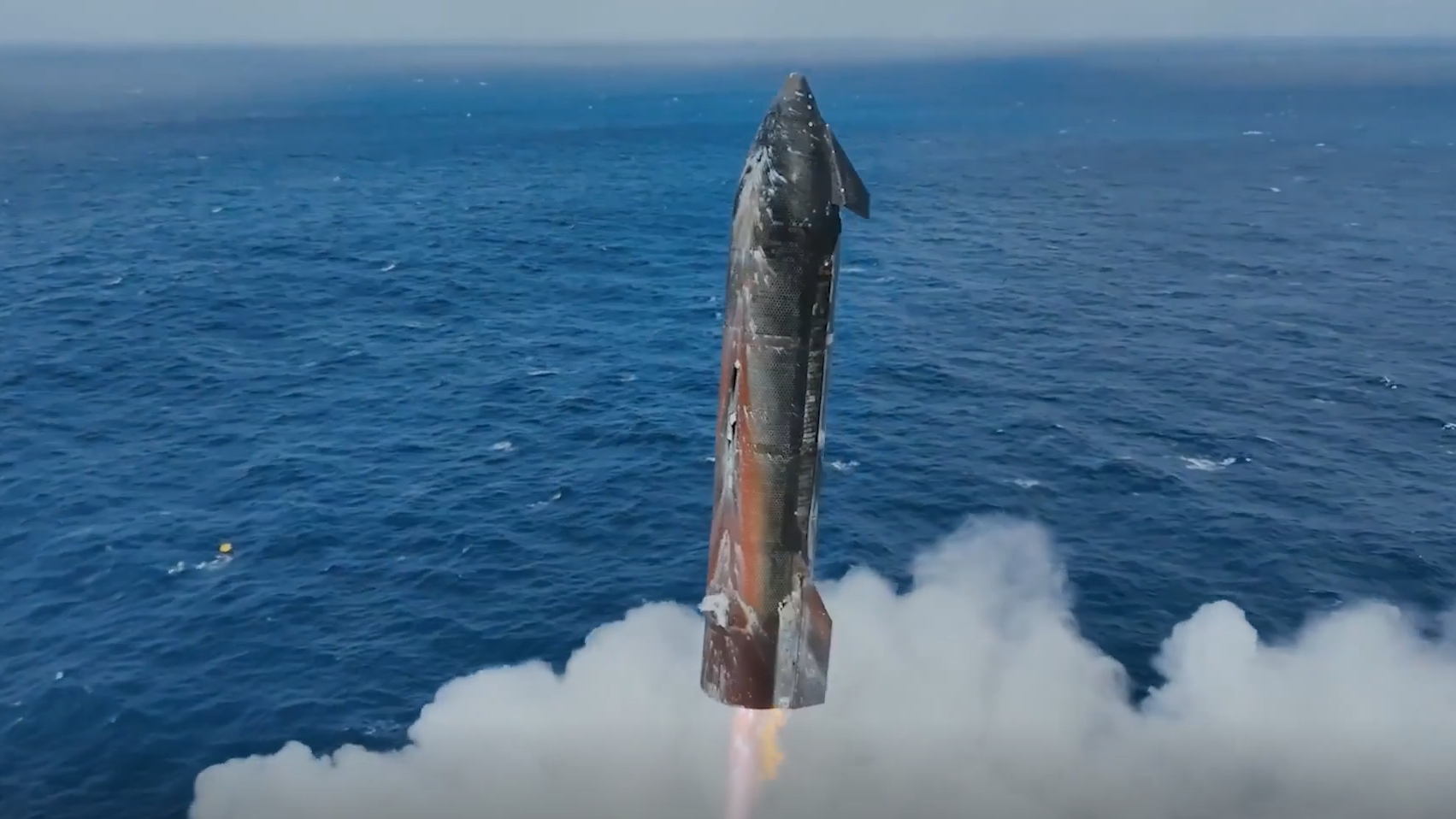Defining Life: Q&A with Scientist Gerald Joyce
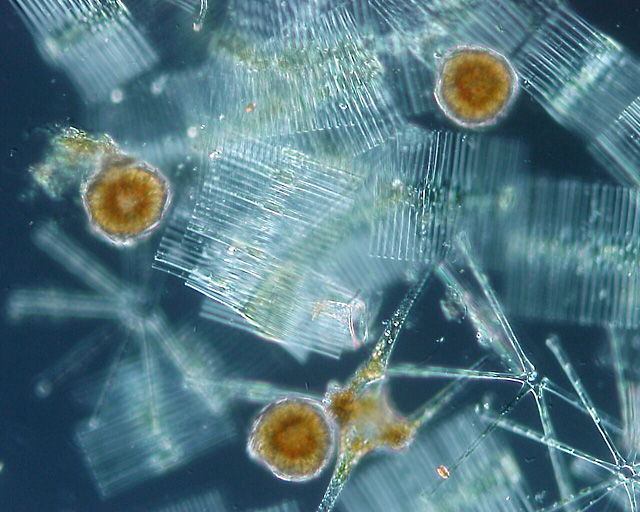
What is life? It’s a seemingly simple question that leads to complex answers and heated philosophical and scientific arguments. Some focus on metabolism as the key to life, others on genetics, and there has even been a suggestion that we need a whole new field of science in order to come up with a satisfactory definition.
If we ever hope to identify life elsewhere in the universe, we need to understand what separates living creatures from non-living matter. A working definition lately used by NASA is that "life is a self-sustaining system capable of Darwinian evolution."
This definition is often credited to Gerald Joyce of the Scripps Research Institute. Joyce’s research focuses on the origin of life, and his lab was the first to produce a self-replicating system, composed of RNA enzymes, capable of exponential growth and evolution. [7 Theories on the Origin of Life]
In this interview, Joyce counters the claim that he coined NASA’s working definition of life, and then discusses the history and thinking behind it. He also reveals why it’s been so hard to come up with a definition that encompasses all the aspects and dimensions of life as we know it.
Q: I’ve heard that you created the definition of life currently used by NASA.
A: No, it’s not mine. To explain a little of the history: John Rummel, who was the manager of the NASA Exobiology program at the time, had something called the "Exobiology Discipline Working Group." It wasn’t a peer-review panel, but rather an advisory group to the program manager on trends and future directions for the field.
The panel was made up of 12 people, and it was a very broad group with regard to scientific expertise. I was one member, and the panel chair was Dick Young, who was the first program manager of Exobiology at NASA. He is now deceased. John Rummel wanted us to put together something called the "Discipline Science Plan," which would give him guidance on directions for the field. So we did that, but it’s not a public document — it was an internal document to help John or the subsequent program managers.
Breaking space news, the latest updates on rocket launches, skywatching events and more!
The panel talked at length about the origins, evolution and distribution of life, and somewhere in the discussion we asked, "What about defining life? We keep saying we’re going to look for it, we’re going to try to make it, we’re going to understand how it arose and how it evolves... so what is it?"
That became a topic for discussion, both in the formal sessions and at dinner in the evening. And of course, you can’t rigorously define life because it’s not a scientific term to begin with; it’s a popular term. Even among scientists, trying to treat it as a scientific term, there are different ways to approach it. Some want a list of attributes, others want a fundamental process, others want some physically recognizable set of attributes for detection.
So we realized we’re not going to make a definition. First of all, we shouldn’t be in the business of doing so, but also it isn’t really possible. Yet we felt like there had to be some kind of working definition. The plan document doesn’t say, "The working definition is…" This was just a matter of discussion so we would know what we were pointing towards and talking about.
There was various language on the table, and I do think I suggested the phrase "self-sustaining chemical system." But it was all a part of the group discussion. There is a place in the plan document that talks about the emergence of such a system as being tantamount to the origin of life.
All of this happened around 1992. Of course, the structure of DNA was discovered in 1953, and the field was still digesting a more genetics-oriented point of view for life, in contrast to one based purely on chemical flux. So this was a way to take advantage of all the progress that was being made in biology and in understanding the fundamental principles of our biology, but also to try to think more broadly.
The coolest thing in the discussion, which wasn’t in the plan document, was appreciating how Darwinian evolution achieves the key attribute of life, which is to allow complex systems to persist despite an often unpredictable and changing environment. And it does so through molecular memory in the form of genetic information that arises and is maintained by Darwinian evolution.
Is there an entirely different way to do that? Not our life, not anything that we’ve ever seen, but perhaps there is another way to skin that cat? That would be a huge breakthrough, if there was some paradigm other than Darwinian evolution that gets you what Darwinian evolution gets you. [Charles Darwin on Display (Gallery)]
That was a fun part of the discussion, but of course, no one had a specific alternative, and I’ve never heard anyone make a credible proposal of how to achieve all of that without Darwinian evolution. When we go in search of other forms of life, we need to be thinking about not just chemicals, but how they’re part of a system that has molecular memory and enables Darwinian evolution.
Now, the reason I get tagged with inventing NASA’s working definition of life is not because I put some language on the table, but because there was a book that David Deamer and Gail Fleischaker edited titled, "Origins of Life: The Central Concepts." It was published in 1994, and it contains the "greatest hits" of origin of life papers at the time — a collection of classic papers in the field. I was asked to write the foreword. I referred to the working definition in the foreword, and people reference the foreword.
Q: So you were just quoting the collaborative working definition.
A: Yes, and I referred to the Exobiology Discipline Working Group, but of course, that doesn’t exist as a public document, so people instead quote the foreword of the book. And, you know, I still think it is a sensible working definition, and a lot of people in the field think so too. But it’s just a working definition; there’s nothing official about it. Nobody voted on it, even though it reflects a consensus view.
The reason it is said to be the "NASA definition" is because it came up in a NASA panel, the Exobiology Discipline Working Group. But NASA doesn’t endorse the definition or use the definition to decide if some funding opportunity is worthy or not worthy, or some research program is successful or not successful. Nothing of the kind.
Q: But doesn’t NASA use the definition to decide what sort of instrumentation to put on rovers, for instance?
A: No, NASA would never weigh the mission against such a simple thing as a working definition. I think what the working definition does is get people’s juices flowing and they say, "OK, so we can’t just go looking for organic compounds, because they may be biogenic or abiogenic." What does it mean if they’re biogenic? Well, that means they came from a living process, which according to the working definition means that there’s some Darwinian system that has brought about coded functional molecules that steer the chemistry into biochemistry.
So that’s a different way you could put it: the difference between life and non-life is the difference between chemistry and biochemistry. But that’s tautological. What makes biochemistry different from chemistry is that it has history in it, and that history is written in the bits that were deposited through Darwinian evolution. If you think of it that way, it’s a good signpost to guide one’s thinking and for people to challenge each other’s ideas.
So then you say, "How are you going to look for genetic material if you don’t even know what it is?" If it’s like ours, you might amplify it by PCR (polymerase chain reaction). But what if it’s not like ours? Some might say you should look for some repeating patterns of charges or shapes that are aperiodic and therefore might harbor informational bits.
There are some subtleties in the working definition. It’s not just a Darwinian system. It’s a self-sustaining.... chemical system.... capable of undergoing.... Darwinian evolution. We actually discussed all those terms. There’s a discussion in the plan document of whether life has to be chemical. Can you have life that is just bits in the aether? At that time, artificial life in the computer was a new thing. There’s a statement in the document about how studies of so-called "Alife," life in the computer, should be encouraged to the extent that they cross-inform studies of chemical life.
But NASA’s not expecting to find a bunch of supercomputers on Mars or Titan. Or even PCs or iPhones. So at least for NASA’s purposes, we wanted to focus on chemical life. [6 Most Likely Places for Alien Life in the Solar System]
"Darwinian evolution" has an associated property list: You can’t have Darwinian evolution without self-replication or reproduction. You can’t have it without mutability, heritability, and variation of form and function. And metabolism is in there too. You can’t have Darwinian evolution without, at some level, a flux of higher-energy starting materials to lower-energy products that drive the processes of replication and whatever is necessary to support replication.
And then there are the speciality properties like locomotion, irritability, ecological properties such as compartmentalization, and so on; those are all adaptations. And then things like photosynthesis, chemosynthesis, energy storage, and so on; those are just strategies of adaptation. All of that is subsumed by the "Darwinian evolution" part.
Now let’s describe the "capable" part. It’s the population, or even the ecology, that makes the living system. Capable doesn’t refer to one individual entity; that doesn’t constitute a living system. A single individual might seem to be capable of undergoing Darwinian evolution, but may in fact be dead, or a fossil remnant, or about to die, or unable to find a mate. So it is the system that is said to be capable, not the individual.
Then finally "self-sustaining." That’s the one I think people get most confused about because metabolism is implicit in Darwinian evolution but not called out in the working definition. People say, "Self-sustained? Nothing’s self-sustained." But "self-sustained" here refers to only what’s in the rest of the definition. Self-sustained refers to the information necessary to undergo Darwinian evolution. Chemical information is the product of Darwinian evolution. So all of the information necessary for the system to undergo Darwinian evolution must be part of the system. [Genetics by the Numbers: 10 Tantalizing Tales]
Maybe we should have said, "A chemical system capable of undergoing Darwinian evolution in a self-sustained manner." But that could still trip people up because they’d say, "It can’t be self-sustained, because that would constitute a perpetual motion machine."
Q: I thought "self-sustained" meant you don’t have to keep pushing it to do it; it does it on its own.
A: It does it on its own in an informational sense. So according to the working definition, a virus doesn’t make the cut. A virus is a chemical system capable of undergoing Darwinian evolution, but if you think of it in terms of a system, a virus isn’t able to undergo self-sustained Darwinian evolution. The viral genome only evolves in the context of the host cell.
Q: The argument I’ve heard against the self-sustained part is that we’re all interdependent.
A: Right, but something within the system, within the collective system, must provide all of the information necessary to bring about Darwinian evolution. The virus alone can’t achieve this, but the virus plus the host cell can.
Then you have the fact that there are biotechnological tools that enable you to carry out directed evolution. You can evolve RNA in the test tube using biological proteins to copy it, mutate it and do all those fun things that make it evolve. But it’s not alive because all those tools that you’re using — protein polymerases and so on — were evolved not in the system, and can’t evolve in the system. They were evolved in viruses, bacteria, eukaryotes, and then were co-opted as "information for free" to bring about Darwinian processes. Those informational tools are not subject to the rules of the same game.
That’s the key concept: That all of the information necessary for a collective system to undergo Darwinian evolution must be present within the collective system. There’s not a puppeteer that handles all the information offstage, and then the molecules are just the puppet show. You could count the puppeteer as part of the system, but then the puppeteer also has to be evolving.
So it’s pretty tricky. I find that a good way to avoid confusion is to ask yourself: Where are the bits of information? If you’re talking Darwinian evolution, then you’re talking molecular information. Are the bits in the system or outside the system? If all the bits necessary for the system to evolve are in the system, then it can meet the working definition.
Q: Do you feel the working definition has been helpful to NASA?
A: You’d have to ask John Rummel or Mary Voytek, but I think so. We’ve had this era — which seems to be over now — where different points of view became rivalrous. "It has to be metabolism before genetics." "No, it has to be genetics before metabolism." And maybe the working definition for awhile made that worse. But I like to think it now makes it better by providing a common reference point.
Q: Well, we still haven’t found life elsewhere, so it’s necessary to have some definition to help us do that.
A: Scientists are getting quite close in the lab, I think. My own lab has developed a self-sustained chemical system capable of undergoing Darwinian evolution. All of the bits that are necessary for it to evolve are within the evolving system.
So why isn’t that life? Well, there’s a little more to it, I think, which has to do with the "capable" part. We really need to expand that part of the working definition. Our laboratory system is capable of evolving, but thus far it has not evolved any new functions.
So then you come back to: Why is Darwinian evolution put front and center in thinking about life? Because it is a way for complex entities to maintain themselves, not as an individual but as a system, in the face of a changing environment that is subject to unanticipated change. A system evolves to adapt to environmental change. It has to be able to invent new functions because those environmental changes may be more than incremental.
But that gets you on a slippery slope of: How "capable" must it be before we regard it as "capable?" Compare something that evolved for 40 minutes and was never heard from again, versus something that evolved for 40 million years and was never heard from again because a giant impactor took it out. So the threshold for "capable" gets a little tricky.
Q: I thought the "capable" was a way to get away from "exhibiting" evolution. Because it would be hard to say whether something you’re looking at in the field is currently undergoing evolution.
A: That’s exactly why "capable" was put in the working definition. But how capable is what I’m now getting at. Capable of fiddling with the 3rd or 4th decimal place of a particular attribute?
Some people want to say "capable of open-ended Darwinian evolution." But "open-ended" is too much because life on Earth isn’t completely open-ended. If Earth were to be struck by a really massive impactor, life would be over here. So life is not open-ended to all possible events. I think "broadly pluripotential" is the right phrase, but I don’t think that will be made part of the working definition.
How "broad" is "broadly?" Lots of things can change in the environment, within some set of bounds, and the system can withstand those changes and, in a Darwinian sense, can survive. I don’t think you can do much better than the present working definition without getting into relative terms.
Q: But there’s no definition for life that is currently agreed upon by everyone. Is that because scientists have different research focuses, and therefore have differing ideas of what is most important?
A: It’s part of that. But people have different philosophical point of views, too, of what is and what is not important. Some people say genetics is just a strategy to bring about the flux of higher-energy starting materials to lower-energy products. Some would say genetics is a kind of adaptation itself. I wouldn’t say that because, to me, genetics is the fundamental basis for Darwinian evolution.
I think of it in terms of the following: What makes biology different compared to chemistry is that biology has a history. That history begins when Darwinian evolution begins, and each next page in that history book is each successive generation and all the genotypes it contains. Chemistry isn’t like that. Chemistry doesn’t record itself; it just happens.
Some say that Darwinian evolution itself is nothing more than a chemical system. But for me that’s odd to say, because once the system is capable of Darwinian evolution, it’s no longer just a chemical system. It has historical attributes and therefore, by definition, it is biological.
Q: That almost sounds like a definition: Life is chemistry with a history.
A: That’s pretty good — I like that! But you can’t put that forward as a working definition because people would go nuts. They’d say there are all sorts of chemical systems that go through oscillations, chaotic behavior, and non-retraceable trajectories. Those systems have a history, but not molecular memory. You can get contingent history in complex chemical systems as a consequence of particular reaction trajectories.
But biology is different in that it actually records the history. Like a palimpsest, a document that’s written on again and again and again, biology is a record of what has proven adaptive at the time, time after time after time. It’s a really powerful way to organize matter.
This story was provided by Astrobiology Magazine, a web-based publication sponsored by the NASA astrobiology program.
Follow us @Spacedotcom, Facebook or Google+. Published on SPACE.com.
Join our Space Forums to keep talking space on the latest missions, night sky and more! And if you have a news tip, correction or comment, let us know at: community@space.com.
Leslie Mullen is an award-winning science photojournalist who has produced TV, radio, podcasts, live stage shows, and web features. Her work has been featured by
NASA, PBS, National Geographic Channel, and other media outlets. Recently, Leslie has worked as writer, producer and host of the NASA/JPL podcast, "On a Mission," which was part of JPL's 2019 Emmy Award for "Outstanding Original Interactive Program." The podcast was awarded the gold medal for best technology podcast at the 2019 New York Festivals Radio Awards, and was a 2019 Webby Award honoree for best science and education podcast.

